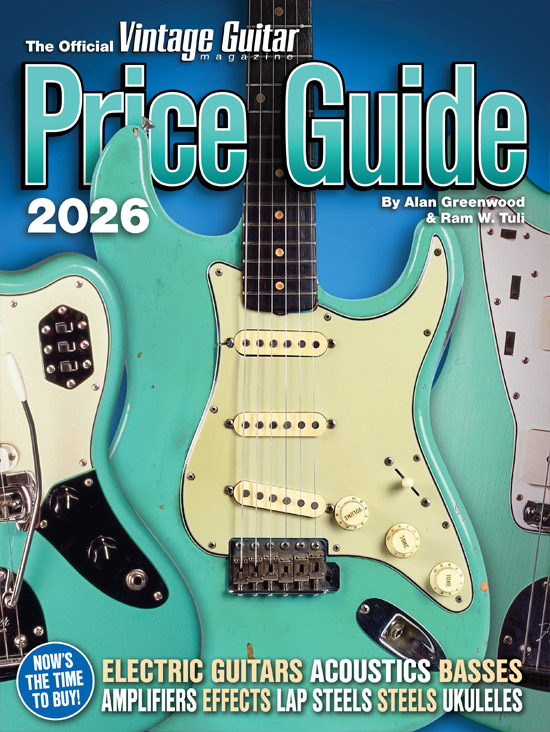
Hailing from Los Angeles, Jerron Paxton is a remarkable bluesman, able to conjure sounds of the rural, interwar South through his voice and fingerstyle guitar, as well as banjo, harp, accordion, and piano. But don’t fob him off as another Robert Johnson wannabe. Paxton is a scholar of country-blues and early jazz music, owing to his family’s Louisiana roots and own experiences. All can be heard on his riveting Smithsonian album, Things Done Changed.
Country-blues music was a part of your upbringing. What attracted a young man to those sounds?
The natural beauty of the sound. My grandmother would play blues radio very loudly on Saturdays, and 98 percent of the music was electric blues. At the age of eight, I had learned enough that whenever I heard the eerie sounds of acoustic blues, I would run to record them off of the radio. Unlike the saturated popular sounds one is exposed to, country-blues was a direct line to my culture that I could hear as well as feel – unlike gangster rap or rock, which I don’t ever remember hearing in my very black community.
The challenge of solo acoustic blues is that one musician is carrying all the parts – chords, bass line, and lead or slide jabs – as on “Things Done Changed.”
As a musician who grew up without other people to play with, part of what attracted me is the ability of one person to sit with an instrument and create a world where nothing is missing. In the words of Fats Waller, “It’s easy to do when you know how!” The “how” usually comes with practice and exposure. I’ve had plenty of both.
On “So Much Weed,” you change up the thumb-bass lines and throw in those slide licks? What tuning are you in?
I tune the guitar in the way I feel best to play a certain song. “So Much Weed” is in Vestapol tuning, which is the primary tuning for guitar evangelists in my neighborhood. That changed with the generations, just as all church music in my community has changed from the sound of spirituals to a more popular-oriented sound with a large choir. In South Central L.A., you could still hear people who played like Blind Willie Johnson or Mississippi Fred McDowell, whose Amazing Grace album I’d listen to. Also, Sister O.M. Terrell, who lived until 2006.
Who were your primary guitar influences?
My primary influences were Bukka White, Scott Dunbar, Mississippi John Hurt, Blind Blake, Skip James, Robert Wilkins, Lonnie Johnson, Smith Casey, Blind Lemon Jefferson, Willie Brown, and Reverend Gary Davis.
“Mississippi Bottom” speaks to the ragtime sound of Piedmont blues, which is different from Delta and Texas blues. How did you develop a feel for all these different styles?
I don’t really think of that as a ragtime tune. In rural black culture, playing a rag means going around the circle of fifths. Although there is a II chord in the song, there’s also one in “Love In Vain” by Robert Johnson, which we certainly wouldn’t call a rag. One develops a feel for different styles but doesn’t get stuck in one. I wouldn’t be much of a professional musician playing in one style for my [entire] set. For a true musician, the natural tendency is to explore and expand; only people who dabble stay in one style forever.
These are also sounds of my culture, and though there are slight regional differences, commonality between the cultures tends to be eroded by academic pursuits of regionalism.
What’s your primary guitar?
I mainly play a Carson J. Robeson Kalamazoo by Gibson, and a Fraulini Felix. The big, booming Fraulini is best for accompanying other instruments while the Gibson is best for solo blues. When recording the title track, I was fortunate enough to switch between the two and found the Gibson made me better achieve the sound I was after.
Are some blues songs better suited to guitar than banjo, or vice-versa?
There are banjo songs and there are guitar songs. Certain songs exist for each respective instrument, but the nature of music is to experiment and see if things can be traded back and forth. The late Gus Cannon playing slide guitar on his banjo is an example.
What has been the reception to Things Done Changed?
The reception has been pretty good so far. Playing traditional music gives you a certain confidence. You play the song because you know it’s good and made you feel a certain way, which you hope to share that with your audience. It’s a little more intimidating when the songs are from your own pen and haven’t been passed through the veil of time.
This article originally appeared in VG’s December 2024 issue. All copyrights are by the author and Vintage Guitar magazine. Unauthorized replication or use is strictly prohibited.



